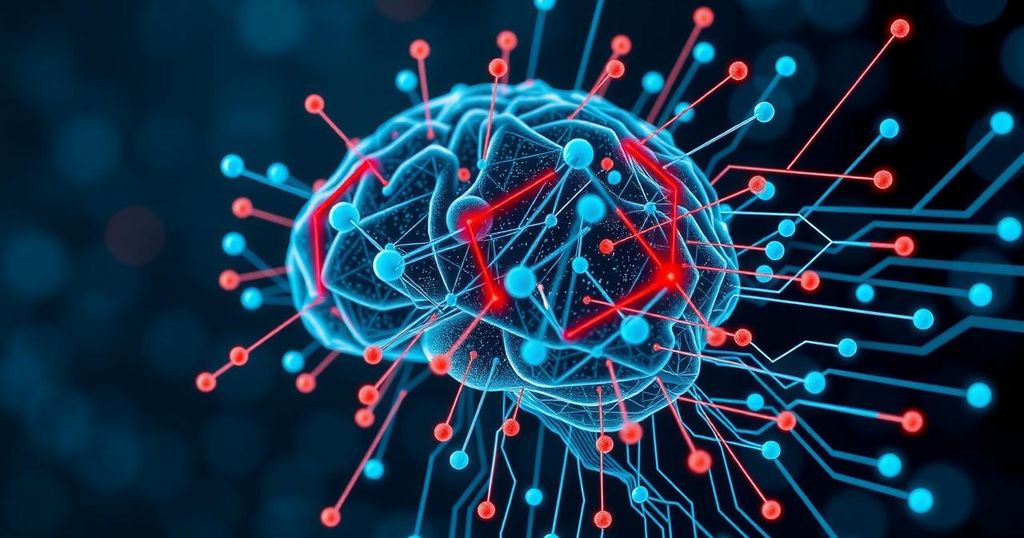The Dark Side of Generative AI: Cyber Threats and Innovations
Generative Artificial Intelligence (GAI) is both a remarkable innovation and a serious cybersecurity threat. It is exploited by malicious actors to create convincing deepfakes, automate phishing scams, and develop malware, transforming the landscape of cybercrime. This article outlines how these threats evolve with GAI’s capabilities and emphasizes the urgent need for strengthened defenses and public awareness to protect against its misuse.
Generative Artificial Intelligence (GAI) is transforming industries at an unprecedented pace, especially in the realm of cybersecurity. While GAI’s potential to create authentic and tailored content can drive innovation, it simultaneously poses significant risks as malicious actors exploit these capabilities for nefarious purposes. This tech is now a key player in cyberattacks, from crafting deepfakes to fueling sophisticated phishing scams, significantly altering the cybersecurity landscape.
The insidious nature of GAI lies in its ability to fabricate realistic media, thereby making it an alarming tool for disinformation campaigns and fraud. The danger escalates with deepfakes, where fabricated images, videos, and audio can easily mislead audiences, making it challenging to discern fact from fiction. The penetration of deepfake technology into everyday life fosters confusion, allowing attackers to manipulate events or impersonate public figures, thus undermining trust in digital media. As proven by the 2019 MIT study, such deceptions could mislead humans about 60% of the time, a percentage that has likely worsened with modern advancements.
The impact of GAI is not confined to mere deception; it is a weapon for widespread influence operations. Microsoft’s Threat Analysis Center reported that Chinese threat actors are leveraging GAI to create provocative online content aimed at destabilizing democratic processes in countries like the United States and Taiwan. They deploy fake social media accounts to stir divisiveness and sway voter opinions, using GAI-generated materials to manipulate public sentiment and exploit internal conflicts.
Furthermore, GAI serves as a boon for financial criminals. By automating phishing email generation, malicious entities can create highly personalized con jobs that significantly increase their chances of success. The FBI has flagged an uptick in fraudulent social media profiles, bolstered by GAI’s ability to conjure realistic text and visuals, making the impersonation of legitimate accounts easier than ever. New tools, such as FraudGPT and WormGPT, provide cybercriminals with robust capabilities to engage in these schemes, leading to a troubling rise in scams.
Another paramount concern is the use of GAI for crafting malware. With GAI technologies automating the generation of diverse malware variants, traditional security methods struggle to keep pace, allowing cybercriminals to enact large-scale attacks with lowered risk. The extensive capability of GAI to produce complex tools for malicious intents dramatically escalates the threats faced by cybersecurity defenses.
Despite the rising tide of GAI misuse, there are efforts to combat these emerging threats. Major players in technology, including OpenAI and Microsoft, are actively developing detection systems aimed at identifying deepfakes and strengthening anti-phishing measures. However, the speed of innovation means that defenders are often lagging behind malicious actors, complicating the security landscape.
As generative AI continues to evolve, its potential for both innovation and exploitation expands. For governments, businesses, and individuals, recognizing GAI’s dangers is crucial in formulating proactive strategies to protect against its misuse. Through united efforts and innovative defenses, society can seize the benefits of GAI while guarding against its pitfalls, ensuring its application contributes positively to humanity.
The article delves into the duality of Generative Artificial Intelligence (GAI), highlighting its transformative benefits while shedding light on its malicious misuse in cybersecurity contexts. It outlines how GAI tools can create convincing fake content—deepfakes, phishing attempts, and even malware—disrupting social trust and enabling various cybercrimes. As GAI technology continues to develop, its application by threat actors becomes increasingly sophisticated, necessitating a robust security response from both technology providers and security agencies.
In conclusion, while GAI presents vast opportunities for creative and innovative advancements, its potential for malicious use cannot be overlooked. As dangerous as it is transformative, GAI has become a fundamental part of the cybercrime toolkit. The need for proactive measures from tech companies and government agencies grows increasingly urgent, as does the need for public awareness of these emerging threats. Only through collaborative efforts can we aim to harness GAI’s strengths while mitigating its risks, ultimately ensuring its responsible utilization.
Original Source: securityaffairs.com




Post Comment